
Pulse Oximeter is a small, lightweight and noninvasive clip-like device that painlessly attach to a body part like finger tip, earlobe or toe to measure oxygen levels (SpO2 %) in the blood. Pulse oximeters are beneficial for people with respiratory disorders such as asthma, COPD and other cardiovascular conditions. A finger pulse oximeter is equipped with advanced technology to easily detect pulse rate values and blood oxygen level.
Personal Pulse Oximeter helps monitor your oxygen saturation level so you can adjust your activities at home, during exercise, and social gatherings.
People with COPD, asthma and other respiratory conditions can maintain an active lifestyle by regularly checking the blood oxygen levels in the body and taking timely actions to prevent the COPD or Asthma from getting worse.
Doctors find pulse oximeters helpful while assessing the effectiveness of lung medication or oxygen therapy and monitoring oxygen levels during and after surgical procedures that require anesthesia. Pulse oximeters are also commonly used to study sleep apnea and during research on medical treatments for respiratory disorders.
Fight Against Covid 19 - Try our newly added iHealth COVID-19 Antigen Rapid Test Kit
You can choose the right pulse oximeters from a wide selection of products available at shopnebulizer.com. Our extensive collection includes figertip oximeters, handheld oximeters, and pediatric oximeters from top brands in the industry.
 |
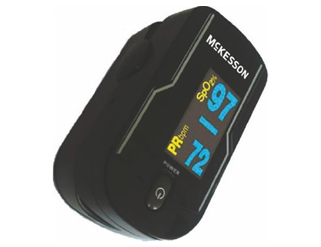 |
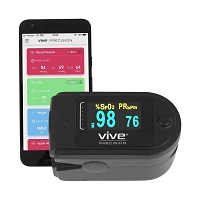 |
| Drive Medquip View SpO2 Deluxe Fingertip Pulse Oximeter | McKesson Fingertip Pulse Oximeter | Vive Bluetooth Pulse Oximeter |
Oxygen is required by every cell, tissue, and organ to survive. Without an adequate supply of oxygen, cells begin to die. The severe symptoms caused by dying cells can ultimately lead to multiple organ failures. The lungs filter the oxygen and distribute the oxygen into the blood through hemoglobin proteins in red blood cells. Pulse oximeter helps measure the oxygen saturation which is the percentage of oxygen in hemoglobin. Oxygen saturation (SpO2 %) is the indicator of the amount of oxygen reaching the vital organs. Pulse oximeters can effectively tell how efficiently the oxygen is being carried to the vital organs and body parts farthest from the heart such as the legs and the arms.
In healthy individual the oxygen saturation levels are between 95 and 100 percent. Immediate medical attention is required when the oxygen saturation levels drop below 90 percent.
Pulse oximeters are commonly clipped to a finger in order to read the blood flow. One side of the clip shines the light beam through a relatively transparent area of the skin which is detected through another clip on the other side of the skin. The oxygen saturation is calculated by pulse oximeter by estimating the amount of light absorbed by the blood. The oxygenated or deoxygenated blood absorbs the light differently. A complex equation and data configuration inside the pulse oximeter are used to determine the pulse rate and oxygen saturation levels which are then displayed on the screen.
Pulse oximeters come in different variety for both personal use and medical professional use in clinics and hospital settings. Doctors often recommend pulse oximeter for home use to patients with asthma, COPD and lung infections. The pulse oximeter can be operated in below steps:
Pulse Oximeter usually provides accurate readings but some factors such as body movement, temperature and nail polish can reduce the accuracy of a pulse oximeter reading. Below are some of the limitations of pulse oximetry-
Pulse oximetry is an easy, quick, noninvasive, and painless test to keep you aware of your pulse rate and oxygen saturation level. There are no known risk factors of using pulse oximeters except for minor skin irritation, skin redness, and sensitivity arising from the lubes used in some probes or clips.
There are pediatric pulse oximeters available in market for young children and infants.
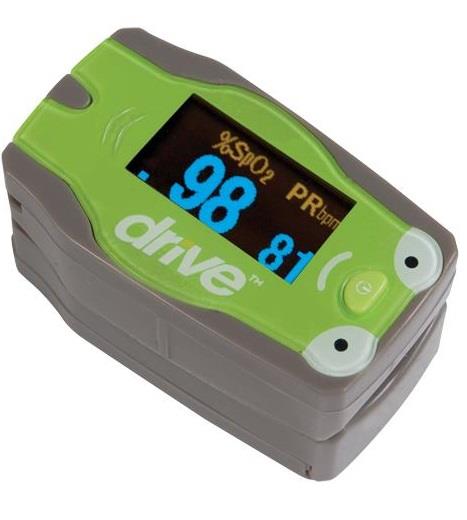 |
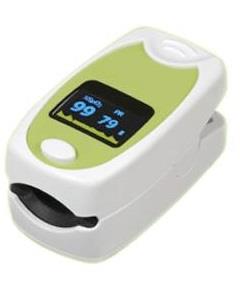 |
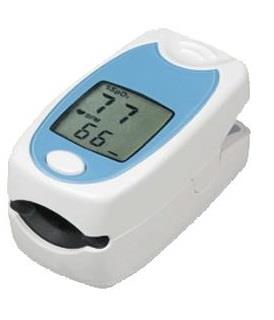 |
| Drive Pediatric Fingertip Pulse Oximeter | Mabis DMI HealthSmart Deluxe Fingertip Pulse Oximeter |
Mabis DMI HealthSmart Standard Fingertip Pulse Oximeter |
Changes in pulse oximeter readings in response to changes in environment or climate can help signal health issues. Special medical attention is required for people who experience signs of oxygen deprivation such as difficulty in breathing, dizziness and shortness of breath. While pulse oximeters are safe to use at home, in case you experience tingling, numbness, or changes in skin color after using the device, consult your doctor immediately.
Disclaimer: All content found on our website, including images, videos, infographics and text were created solely for informational purposes. Our content should never be used for the purpose of diagnosis or treatment of any medical conditions. Content shared on our websites is not meant to be used as a substitute for advice from a certified medical professional. Reliance on the information provided on our website as a basis for patient treatment is solely at your own risk. We urge all our customers to always consult a physician or a certified medical professional before trying or using a new medical product.